Your brain creates happiness through a complex network of chemical messengers and specialized regions working together. When you experience joy, your brain releases specific neurotransmitters like dopamine, serotonin, and endorphins that create those good feelings. The limbic system, particularly the amygdala, hippocampus, and prefrontal cortex, plays a central role in determining how you experience joy, while brain molecules make you feel great through their coordinated release.
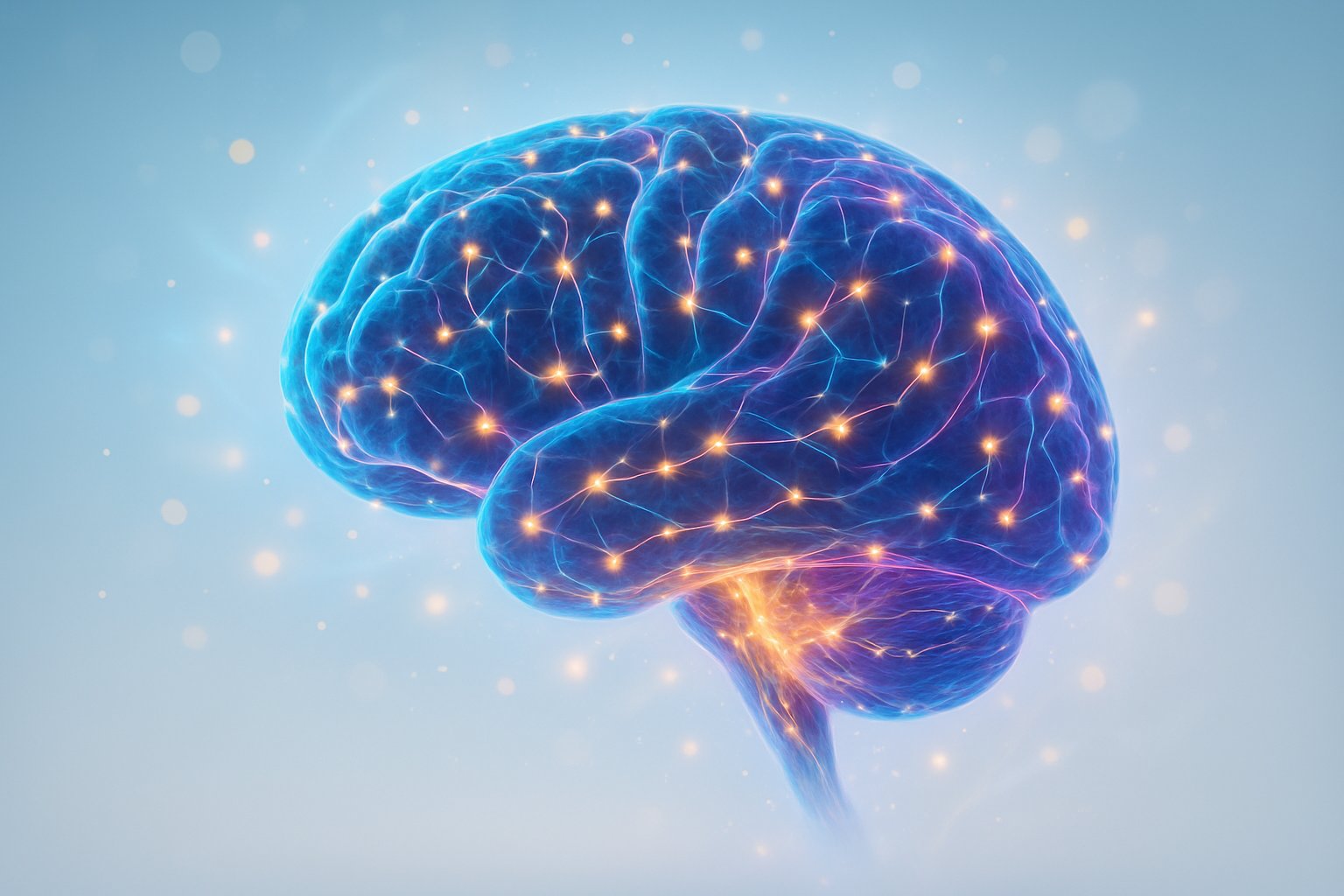
Understanding the science behind happiness reveals why certain activities make people feel better than others. The brain’s reward system responds to achievements, social connections, and physical activity by flooding neural pathways with feel-good chemicals. Modern research shows that people can actively influence their brain chemistry through lifestyle choices rather than relying solely on external circumstances.
The neuroscience of well-being extends beyond simple chemical reactions. Brain structures process emotions differently based on individual experiences, genetics, and daily habits. This knowledge empowers people to make informed decisions about activities that naturally boost their mood and create lasting positive changes in their mental state.
Key Takeaways
- The brain produces happiness through neurotransmitters like dopamine, serotonin, and endorphins released by specific brain regions
- People can actively rewire their brains for greater happiness through lifestyle choices and daily activities
- Understanding brain chemistry helps explain why certain behaviors and experiences create lasting well-being
How Happiness Is Generated in the Brain
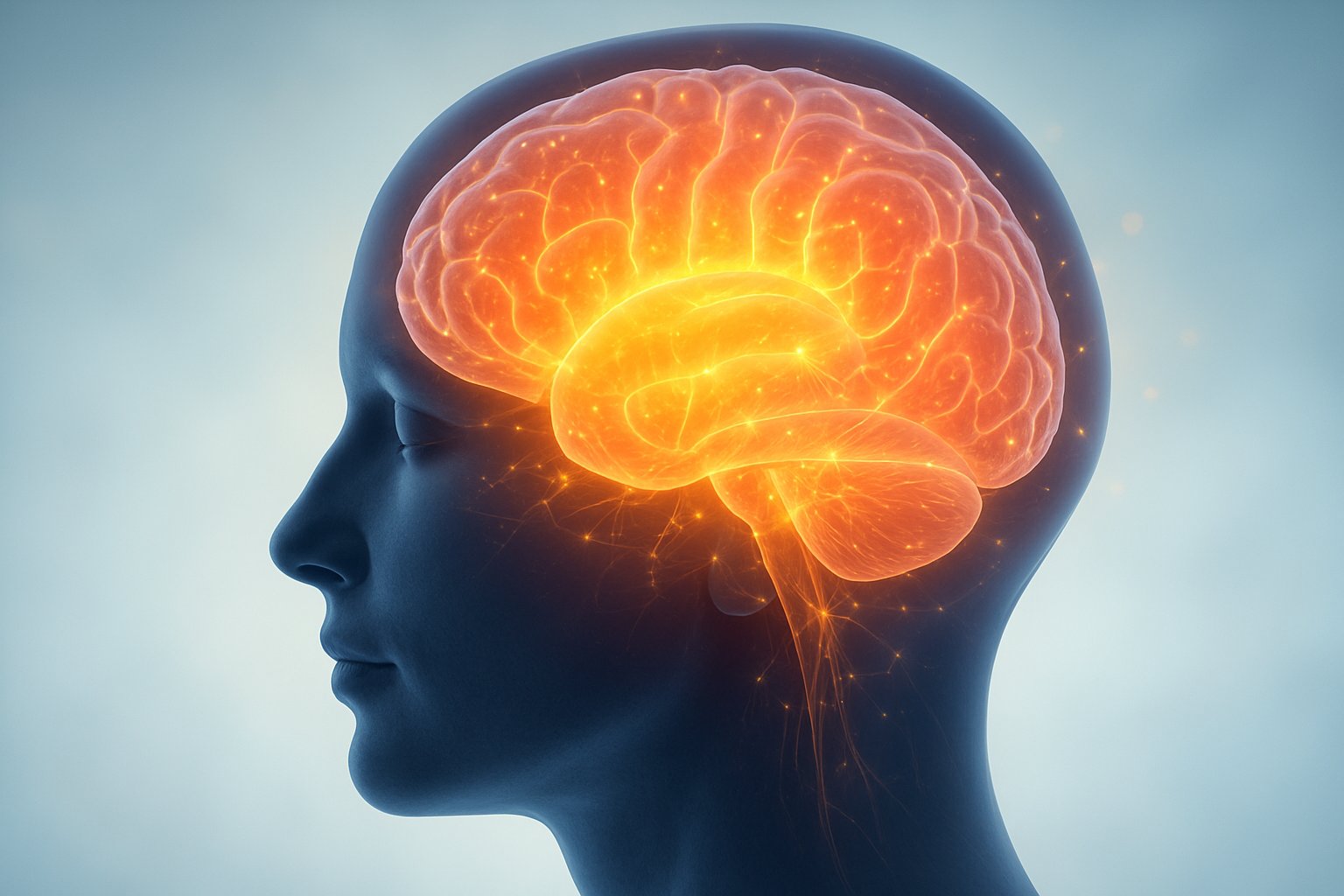
The brain creates happiness through a complex system of chemical reactions and neural networks working together. This process involves specific brain regions releasing neurochemicals that trigger positive emotions and reinforce behaviors that promote survival and well-being.
Biological Purpose of Happiness
Happiness serves as the brain’s reward system for behaviors that help humans survive and thrive. The brain evolved to release pleasant chemicals when people engage in activities that benefit their health, relationships, and reproduction.
This system encourages people to seek food when hungry, form social bonds, and care for children. The evolutionary imperatives of survival and procreation drive these reward responses in most animals.
The brain treats happiness as a signal that current circumstances are good. This motivates people to repeat beneficial behaviors and seek similar positive experiences.
When someone feels happy, their brain is essentially saying “this is good for you.” The feeling creates motivation to continue activities that triggered the positive response.
The Role of Brain Chemistry
Brain chemistry controls happiness through four main neurochemicals that work together to create positive feelings. Each chemical plays a specific role in generating different aspects of happy emotions.
Dopamine creates feelings of pleasure and motivation when people achieve goals or experience something rewarding. This chemical drives the desire to seek out positive experiences and repeat successful behaviors.
Serotonin regulates mood and creates feelings of contentment and well-being. Low serotonin levels often lead to depression, while balanced levels support stable positive emotions.
Endorphins act as natural painkillers and create feelings of euphoria during stress or physical activity. These chemicals help people feel good even during challenging situations.
Oxytocin promotes social bonding and trust between people. This neurochemical increases during physical touch, social connection, and acts of kindness.
The brain produces these neurochemicals naturally to create different types of positive experiences and emotions.
Key Brain Regions Involved
The prefrontal cortex processes complex emotions and helps evaluate whether experiences are positive or negative. This region works with other brain areas to create the full experience of happiness.
The nucleus accumbens serves as a central hub for the brain’s reward system. This area receives signals about pleasurable sensations and releases dopamine in response to positive experiences.
The ventral tegmental area supplies the nucleus accumbens with the chemicals needed for pleasure responses. These two regions work together to create feelings of satisfaction and joy.
The limbic system, including the amygdala and hippocampus, connects emotions with memories. This helps the brain remember what makes a person happy and seek similar experiences in the future.
Multiple brain regions must work together to create the complex experience people recognize as happiness. No single area controls all aspects of positive emotions.
The Role of Neurotransmitters in Happiness
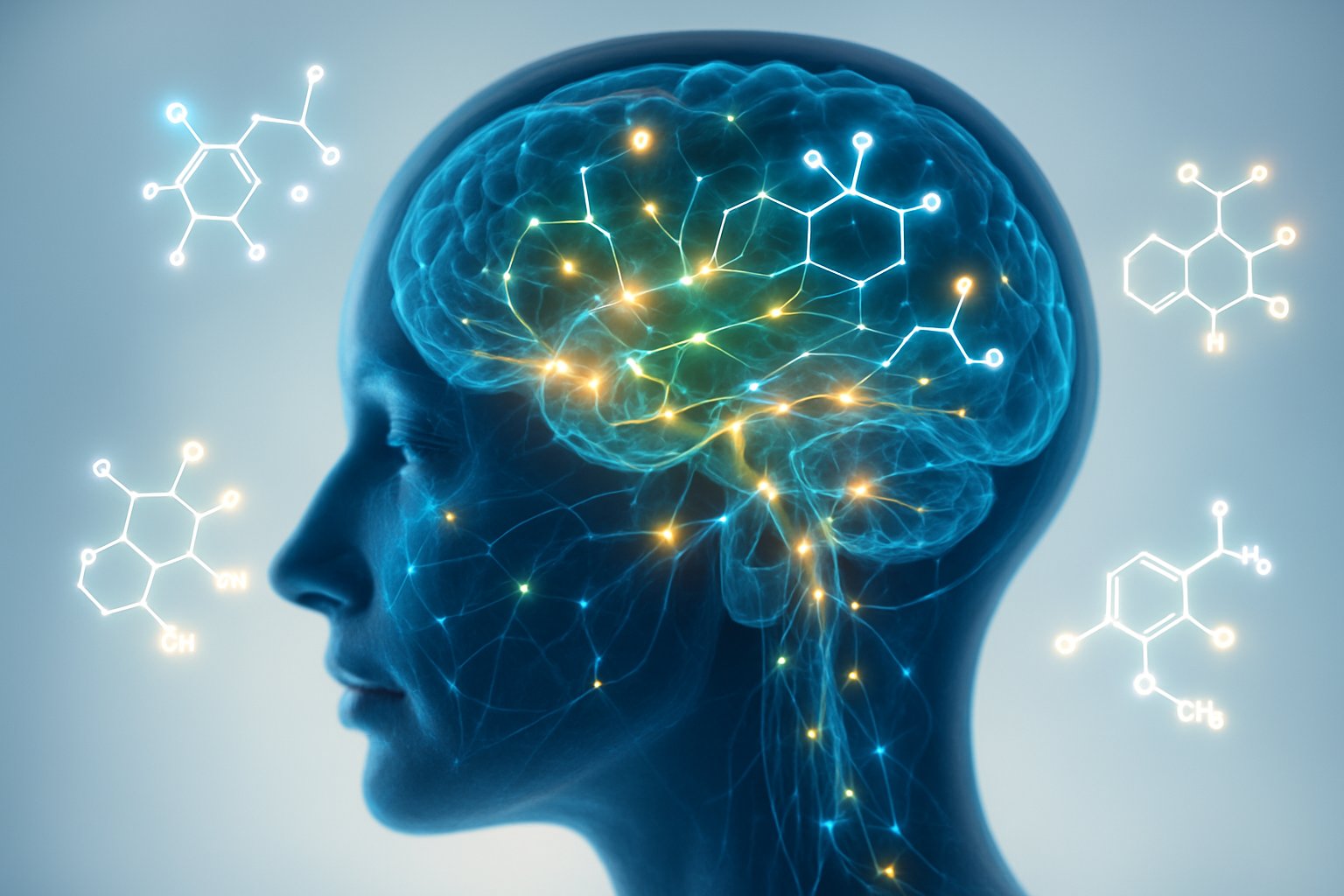
Four main chemical messengers control how the brain creates feelings of happiness and well-being. These neurotransmitters work together in complex ways to influence mood, reward processing, pain relief, and social connections.
Dopamine and the Reward System
Dopamine acts as the brain’s primary reward chemical. It creates feelings of pleasure when people achieve goals or experience something rewarding.
The brain releases dopamine when it expects a reward or when something good happens. This creates motivation to repeat behaviors that led to the positive outcome.
Key functions of dopamine include:
- Driving goal-seeking behavior
- Creating feelings of satisfaction after achievements
- Motivating people to pursue rewards
- Supporting learning from positive experiences
Setting and achieving goals triggers dopamine release, which explains why completing tasks feels so satisfying. The reward system helps people stay motivated to work toward their objectives.
People with higher dopamine levels often show more outgoing personalities. They tend to take more risks and seek new experiences more actively than those with lower levels.
Serotonin’s Influence on Mood
Serotonin regulates mood, confidence, and emotional stability. It helps people feel calm and content while reducing sensitivity to rejection.
Low serotonin levels link to depression, anxiety, and negative thinking patterns. Higher levels support better mood regulation and emotional resilience.
The brain produces more serotonin when people:
- Exercise regularly
- Get sunlight exposure
- Eat foods with tryptophan
- Practice gratitude
- Complete meaningful tasks
Serotonin functions as “the confidence molecule” because it reduces fear of rejection. This allows people to take on challenges that build self-esteem.
Many antidepressant medications work by keeping serotonin active in the brain longer. However, natural methods can also help maintain healthy serotonin levels.
The Effects of Endorphins
Endorphins work like natural painkillers in the brain. They block pain signals and create feelings of euphoria during stressful or intense situations.
The body releases endorphins during:
- Intense physical exercise
- Stressful experiences
- Laughter
- Spicy food consumption
- Sexual activity
Endorphins resemble morphine in their chemical structure and provide similar pain-blocking effects. They help people push through difficult physical challenges.
High-intensity workouts trigger more endorphin release than light exercise. This explains why people often feel energized and happy after challenging workouts.
Endorphin benefits include:
- Natural pain relief
- Improved stress tolerance
- Enhanced mood after exercise
- Better ability to handle physical challenges
Oxytocin and Social Bonding
Oxytocin strengthens emotional connections between people. It increases trust, empathy, and feelings of closeness in relationships.
Physical touch triggers oxytocin release. Hugging, hand-holding, and other forms of contact boost these bonding chemicals in the brain.
The hormone helps create strong bonds between:
- Romantic partners
- Parents and children
- Close friends
- Even humans and pets
Oxytocin levels increase in both dogs and their owners after spending time together. This shows how the bonding chemical works across species.
Social activities that boost oxytocin include group exercise, team sports, and community involvement. These connections become especially important in today’s digital world where people spend less time together in person.
Brain Structures and Emotional Processing
Multiple brain regions work together to create happiness and positive emotions. The prefrontal cortex regulates emotional responses, while the nucleus accumbens drives pleasure-seeking behaviors and the amygdala controls emotional intensity.
Prefrontal Cortex and Positive Emotions
The prefrontal cortex acts as the brain’s emotional control center. This region sits at the front of the brain and helps regulate how people experience positive emotions.
When someone feels joy, the prefrontal cortex works to maintain balanced emotional responses. It prevents emotions from becoming too intense or overwhelming. The prefrontal cortex plays a crucial role in regulating emotions and helps modulate emotional responses.
Key functions include:
- Managing emotional intensity
- Planning future positive experiences
- Making decisions based on emotional information
- Connecting thoughts to feelings
The prefrontal cortex also helps create positive affect by linking happy memories to current experiences. When this area functions well, people can better control their emotional responses and maintain stable moods.
Nucleus Accumbens and Pleasure
The nucleus accumbens forms the core of the brain’s reward system. This small structure releases dopamine when people experience something pleasurable or rewarding.
Dopamine floods this region when someone eats good food, receives praise, or accomplishes goals. Dopamine is associated with pleasure and reward processing in the brain.
The nucleus accumbens creates motivation for positive experiences. It drives people to seek out activities that brought happiness before. This creates a cycle where positive experiences encourage more positive-seeking behavior.
The reward system activates through:
- Physical pleasures like food or touch
- Social rewards like compliments
- Achievement-based rewards like completing tasks
- Novel experiences that create excitement
This brain region learns from repeated positive experiences. It strengthens connections that lead to happiness and joy over time.
Amygdala and Emotional Intensity
The amygdala controls the intensity of all emotions, including positive ones. The amygdala serves as our brain’s emotional alarm system and processes emotional significance quickly.
This almond-shaped structure decides how strongly someone feels an emotion. For happiness, the amygdala determines whether joy feels mild or overwhelming.
The amygdala processes emotions through:
- Rapid evaluation of emotional events
- Memory formation during emotional experiences
- Physical responses to emotional triggers
- Communication with other brain regions
The amygdala responds to emotional stimuli within milliseconds, often faster than conscious awareness. This quick response helps shape the intensity of happy feelings.
When the amygdala works properly with other brain regions, it helps create balanced emotional experiences. It ensures positive emotions feel appropriate for the situation without becoming too intense or too weak.
Lifestyle Factors That Boost Happiness

Simple daily choices can trigger powerful chemical changes in the brain that create lasting happiness. Physical activity releases natural mood boosters, while quiet practices calm the mind, and meaningful relationships activate bonding hormones.
Exercise and Endorphin Release
Physical activity creates one of the most reliable ways to boost mood naturally. When people exercise, their brains release endorphins, which are chemicals that block pain and create feelings of pleasure.
The Runner’s High Effect
The famous “runner’s high” happens when endorphin levels spike during intense exercise. This natural high can last for hours after a workout ends.
Exercise significantly increases serotonin levels after activities like biking, dancing, or weightlifting. These chemicals work together to improve mood and reduce stress.
Types of Exercise That Help
- Cardio activities: Running, swimming, cycling
- Strength training: Weight lifting, resistance exercises
- Fun movement: Dancing, sports, hiking
Even light exercise like a 15-minute walk can trigger endorphin release. The key is moving the body regularly rather than doing intense workouts occasionally.
Meditation and Mindfulness
Meditation creates measurable changes in brain chemistry that promote happiness and contentment. Studies show meditation increases dopamine levels by 64 percent after just one hour of practice.
How Mindfulness Works
Mindfulness meditation trains the brain to focus on the present moment. This practice reduces activity in areas linked to worry and negative thinking.
Regular meditation also balances stress hormones like cortisol. Lower cortisol levels allow happiness chemicals to work more effectively.
Simple Meditation Practices
- Breathing focus: Count breaths for 5-10 minutes
- Body scanning: Notice physical sensations from head to toe
- Mindful walking: Pay attention to each step and breath
Yoga combines movement with mindfulness, offering double benefits for brain chemistry. The stretching releases physical tension while the breathing calms mental stress.
Social Connections and Shared Joy
Human brains are wired for connection, and positive social interactions activate reward centers that amplify happiness. Strong relationships trigger the release of oxytocin, often called the “love hormone.”
Physical Touch and Bonding
Physical intimacy like hugging, cuddling, or holding hands increases oxytocin production. Even brief touches can create lasting mood improvements.
Sharing and Kindness
Simple acts create powerful chemical responses:
- Cooking together: Food sharing increases oxytocin levels
- Giving compliments: Kind words boost happiness in both people
- Laughing together: Laughter releases endorphins and strengthens social bonds
Talking and Thinking About Loved Ones
Oxytocin levels rise when people talk to close friends or family members. Even thinking about loved ones can trigger this bonding hormone.
Quality matters more than quantity in relationships. A few deep connections create more happiness than many shallow ones.
The Impact of Stress and Mood Disorders
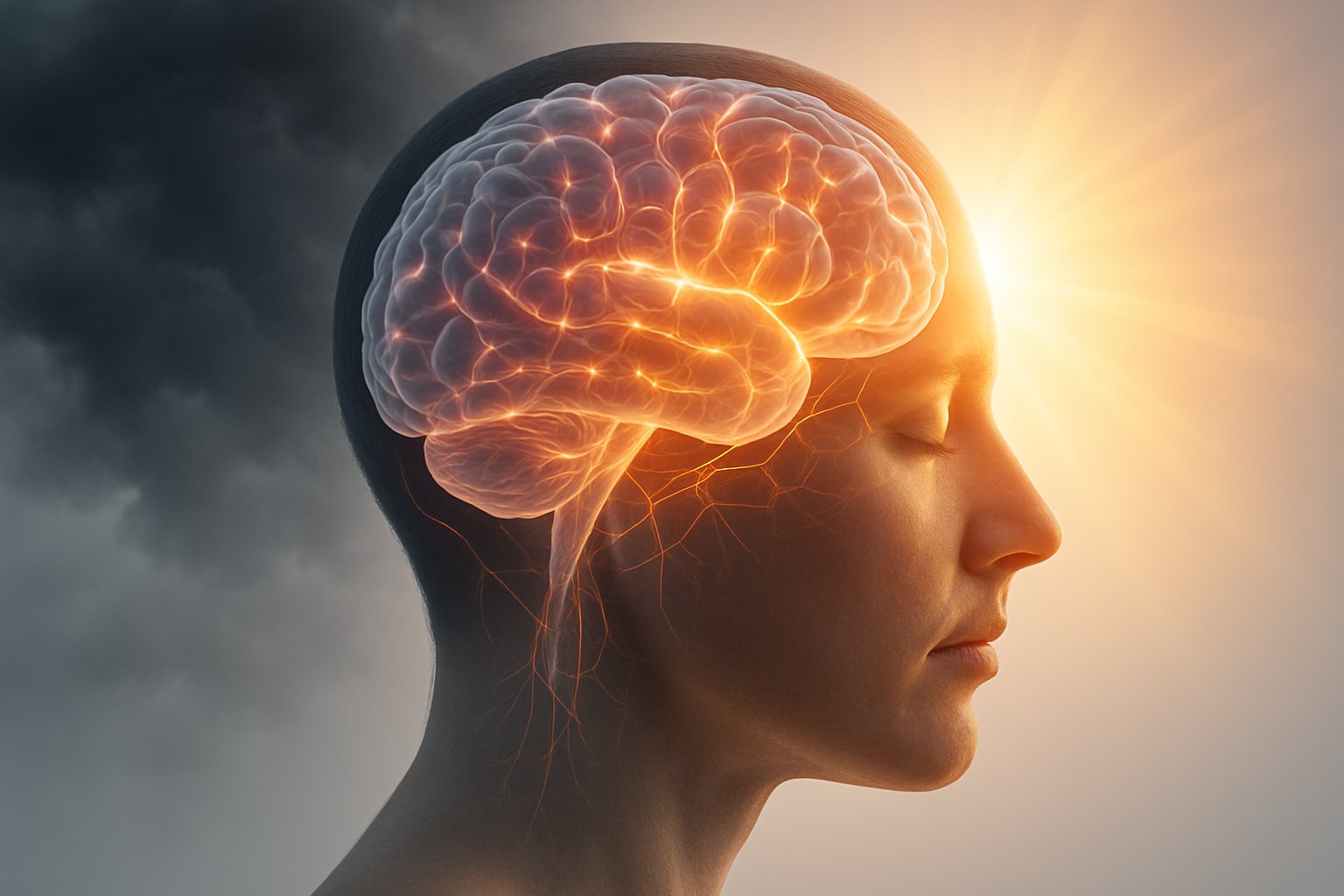
Chronic stress triggers harmful changes in brain structure and chemistry that directly interfere with happiness-producing pathways. When stress hormones like cortisol flood the brain for extended periods, they disrupt neurotransmitter balance and damage key regions responsible for mood regulation.
Effects of Chronic Stress on the Brain
Chronic stress fundamentally alters brain structure by damaging areas crucial for emotional well-being. The hippocampus, which processes memory and regulates mood, actually shrinks under prolonged stress exposure.
Key brain changes include:
- Reduced hippocampus volume
- Impaired prefrontal cortex function
- Increased amygdala reactivity
The prefrontal cortex loses its ability to make good decisions and control emotions. Meanwhile, the amygdala becomes overactive, creating heightened fear and anxiety responses.
Stress interferes with cognition, attention, and memory while promoting harmful inflammation throughout the brain. This inflammation damages neurons and disrupts the production of happiness chemicals like serotonin and dopamine.
Neuroplasticity – the brain’s ability to form new connections – becomes severely limited. This makes it harder for people to adapt to positive changes or develop new coping strategies.
Depression and Neurochemical Imbalance
Depression creates a complex disruption in brain chemistry that blocks natural happiness pathways. The condition involves multiple neurotransmitter systems working poorly together.
Primary chemical imbalances:
- Serotonin: Controls mood, sleep, and appetite
- Dopamine: Manages pleasure and motivation
- Norepinephrine: Affects energy and alertness
Stress can lead to low mood, creating a cycle that significantly impacts daily life. When these chemicals drop to low levels, people lose their ability to feel pleasure from activities they once enjoyed.
The brain’s reward system becomes less responsive. This means even positive experiences fail to trigger the same happy feelings they once did.
Medications like Prozac work by increasing serotonin availability in the brain. However, these drugs take weeks to show effects because they must help rebuild damaged neural pathways.
There is a clear link between prolonged stress and mood disorders, as constant stress hormones alter brain chemistry and circuitry.
Role of Cortisol in Negative Affect
Cortisol serves as the body’s primary stress hormone, but chronic elevation destroys mood-regulating brain functions. When cortisol levels stay high for months or years, it creates lasting damage to happiness pathways.
Cortisol’s harmful effects:
- Suppresses serotonin production
- Increases inflammation in mood centers
- Disrupts sleep patterns
- Reduces neurogenesis (new brain cell growth)
High cortisol levels directly interfere with the brain’s ability to produce and use happiness chemicals effectively. The hormone blocks serotonin receptors and reduces dopamine sensitivity.
The hypothalamic-pituitary-adrenal axis becomes overactive, flooding the system with stress hormones even during calm moments. This creates a constant state of chemical imbalance.
Cortisol also damages the blood-brain barrier, allowing inflammatory substances to enter brain tissue. These inflammatory compounds further disrupt neurotransmitter function and prevent normal mood regulation.
The hormone interferes with sleep quality, which is essential for emotional processing and neurotransmitter replenishment. Poor sleep then triggers more cortisol release, creating a destructive cycle.
Happiness, Motivation, and the Pursuit of Purpose
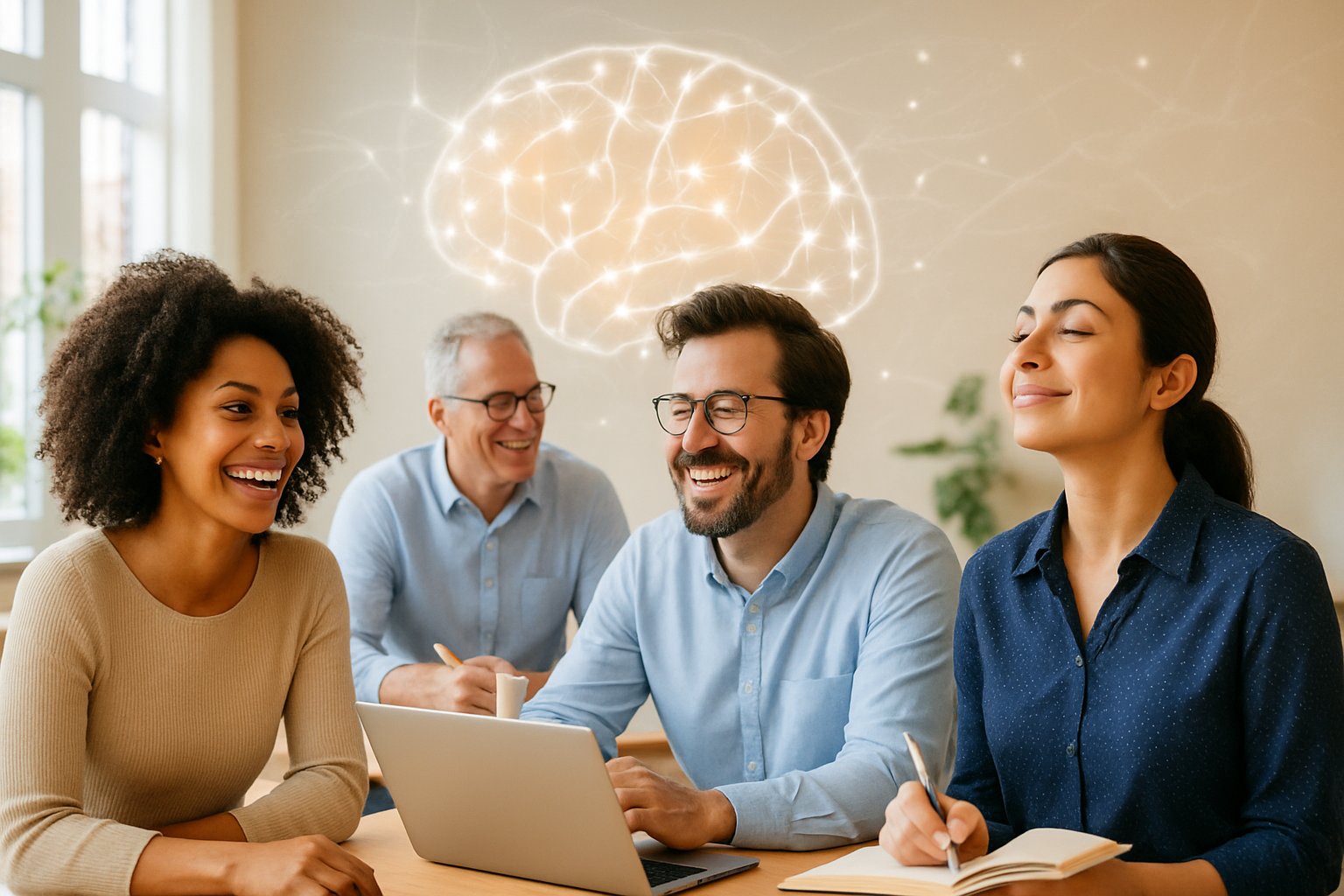
The brain’s happiness circuits connect deeply with motivation and life purpose. Dopamine releases during anticipation create joy before goals are reached, while meaningful activities generate lasting satisfaction through distinct neural pathways.
Goal Achievement and Anticipation
The brain produces happiness long before reaching actual goals. Research shows dopamine releases during anticipation, energizing people with motivation and joy.
This anticipation system works through specific brain regions. The ventral tegmental area connects to the nucleus accumbens through dopamine pathways. These connections activate when people expect rewards based on past experiences.
Key anticipation effects:
- Increased energy and focus
- Enhanced motivation to pursue goals
- Positive emotions before achievement
- Better memory formation for rewarding experiences
The intensity of expected rewards determines how likely people are to remember and repeat behaviors. Higher anticipated rewards create stronger neural responses and more persistent motivation.
This system explains why planning vacations often feels as good as taking them. The brain treats anticipated pleasure as real happiness, creating positive emotions throughout the pursuit process.
Purpose and Life Satisfaction
Purpose activates different brain networks than immediate pleasure-seeking. Johns Hopkins psychiatrist Dr. Adam Kaplin notes that purely happy people focus on instant gratification, while purposeful individuals engage broader meaning systems.
Meaningful activities engage the prefrontal cortex more heavily than reward-seeking behaviors. This brain region processes long-term planning and values-based decisions.
Purpose vs. Pleasure in the Brain:
| Purpose-Driven Activity | Pleasure-Seeking Activity |
|---|---|
| Activates prefrontal cortex | Activates reward centers |
| Sustained satisfaction | Temporary highs |
| Builds self-esteem | Creates dependency patterns |
| Long-term neural changes | Short-term dopamine spikes |
People with strong life purpose show more resilient happiness patterns. Their brains maintain positive states even during difficult periods because meaning provides emotional stability beyond momentary pleasures.
Optimism and Hope
Optimism creates measurable brain changes that support sustained happiness. Science validates hope and optimism as genuine sources of happiness, not mere illusions.
The brain processes hopeful thoughts through the anterior cingulate cortex and prefrontal regions. These areas regulate emotions and maintain positive expectations about future outcomes.
Optimistic thinking patterns strengthen neural pathways associated with resilience. People who practice hopeful thinking show increased activity in areas linked to problem-solving and emotional regulation.
Optimism affects the brain through:
- Enhanced stress recovery systems
- Improved emotional regulation networks
- Stronger connections between planning and reward centers
- Increased production of mood-supporting neurotransmitters
Hope specifically activates goal-directed thinking networks. When people maintain hope, their brains stay engaged in solution-finding rather than dwelling on problems.
These optimistic brain patterns can be strengthened through practice. Regular positive thinking exercises create lasting changes in neural connectivity and neurotransmitter production.
Addictive Substances and Artificial Happiness
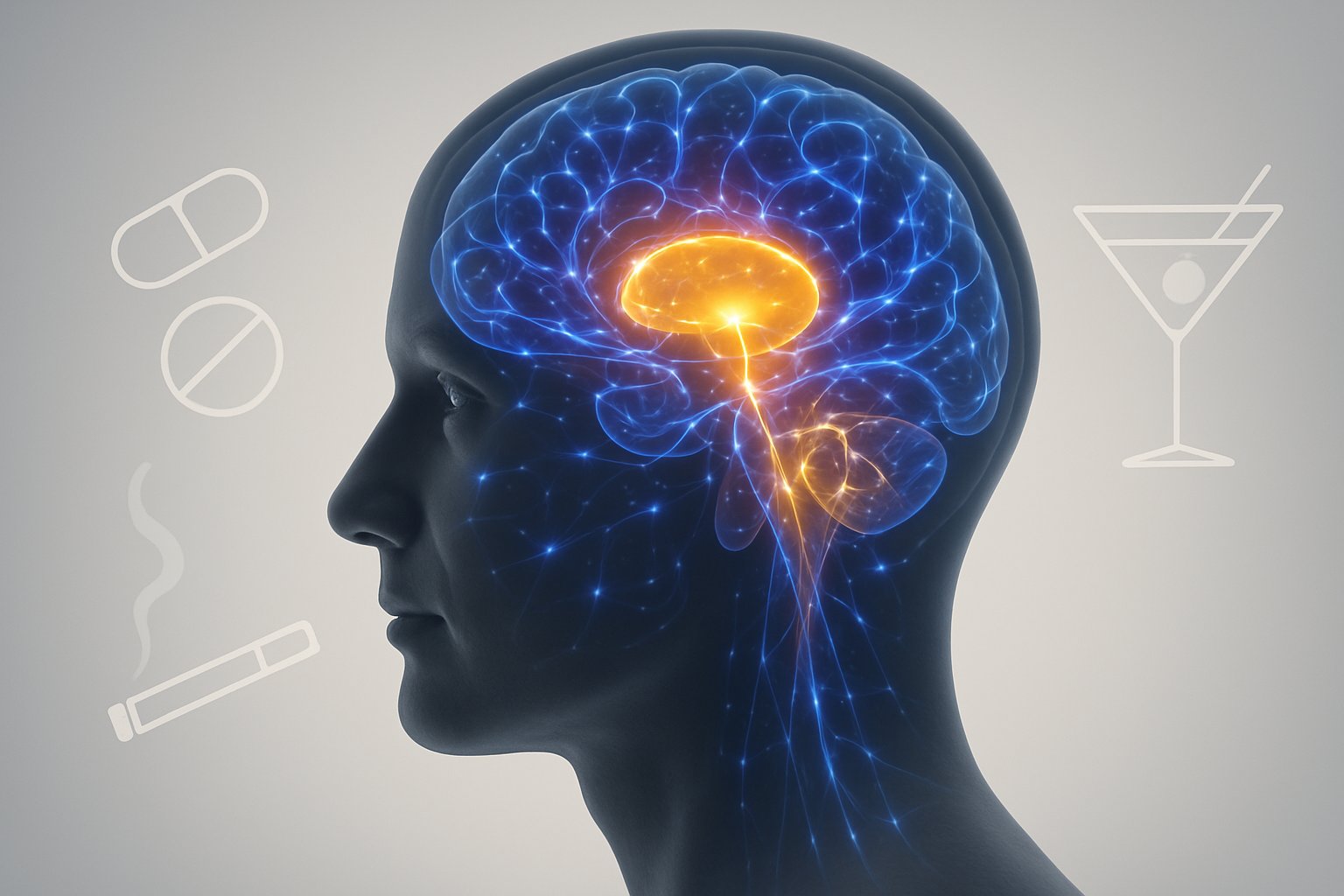
Addictive drugs create false feelings of happiness by flooding the brain with unnaturally high levels of dopamine. This artificial euphoria differs greatly from genuine joy, which comes from balanced brain chemistry and meaningful experiences.
How Drugs Alter Reward Pathways
Addictive substances hijack the brain’s natural reward system by targeting specific areas responsible for pleasure and motivation. The ventral tegmental area, nucleus accumbens, and prefrontal cortex become overwhelmed with dopamine.
Normal dopamine levels during everyday activities range from small increases for basic needs like food. Drug-induced dopamine can spike 2-10 times higher than natural rewards.
These substances work by blocking dopamine reuptake or triggering massive dopamine release. Cocaine prevents dopamine from being cleared from synapses. Methamphetamine forces dopamine storage areas to dump their contents.
Repeated drug use rewires the brain’s reward circuitry through a process called neuroplasticity. The brain strengthens connections linked to drug-seeking behaviors while weakening responses to natural pleasures.
Over time, the brain adapts by reducing its own dopamine production. This leaves people needing drugs just to feel normal, not happy.
Differences Between Euphoria and True Joy
Euphoria from addictive drugs creates intense but short-lived positive affect that feels artificial and overwhelming. True happiness involves balanced neurotransmitter activity and sustainable emotional states.
Drug-induced euphoria characteristics:
- Extremely intense feelings
- Short duration (minutes to hours)
- Followed by crashes or withdrawal
- Requires increasing amounts over time
- Interferes with natural reward processing
Natural happiness features:
- Moderate, sustained positive emotions
- Longer-lasting satisfaction
- No negative aftermath
- Enhances overall well-being
- Supports healthy brain function
The brain treats addictive substances as more important than basic needs like food, safety, or human connection. This creates a false priority system where drugs become the primary source of positive affect.
People experiencing drug-induced euphoria often describe feeling disconnected from reality. Natural joy typically involves meaningful connections, accomplishments, or experiences that align with personal values and relationships.
The Neuroscience of Lasting Well-Being
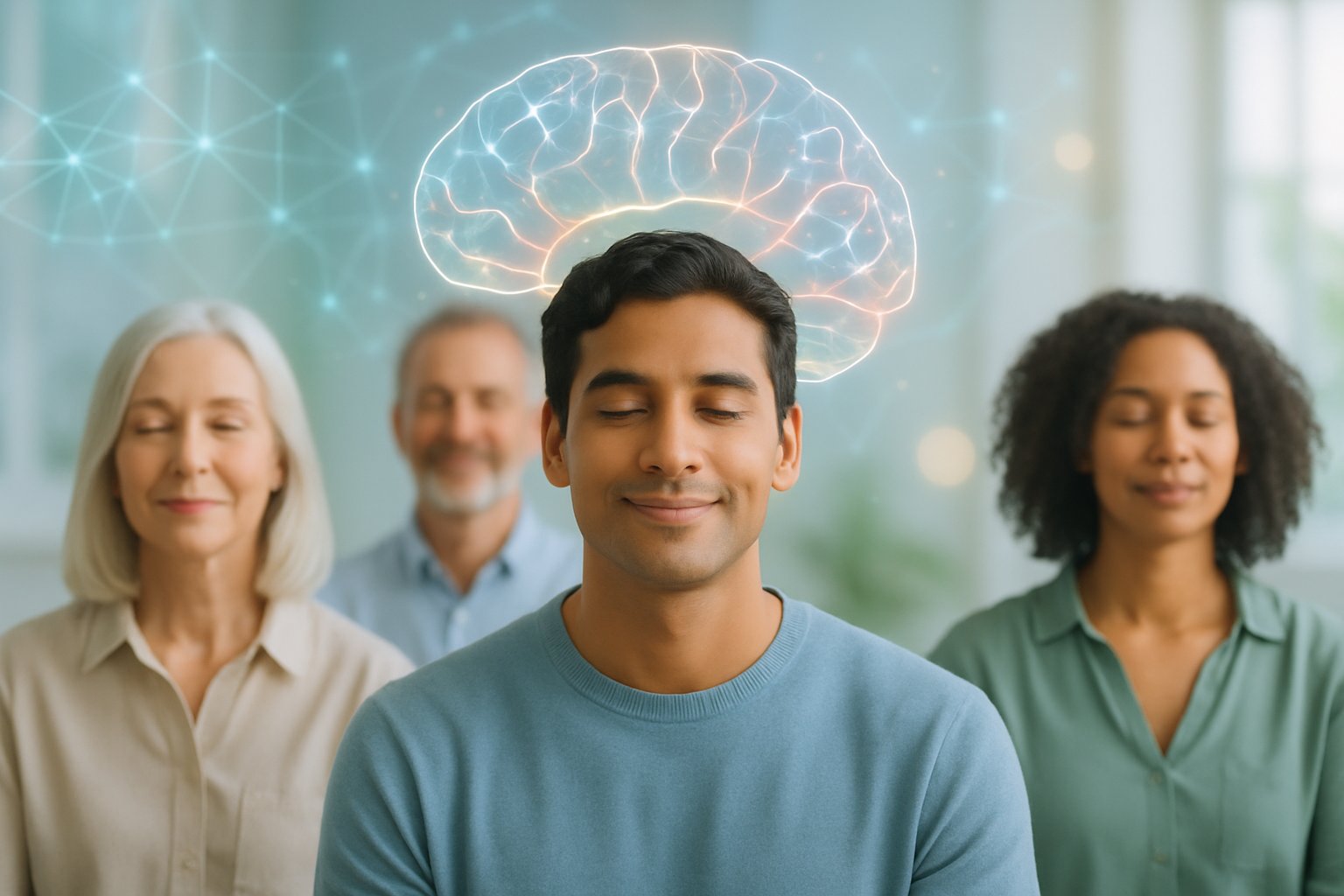
The brain’s ability to change through practice creates lasting happiness through specific neural pathways. Three key areas shape long-term well-being: gratitude rewiring reward circuits, sleep balancing emotions, and flow states optimizing brain chemistry.
Gratitude and Brain Plasticity
Gratitude activates brain regions linked to reward, creating real changes in neural structure. The practice strengthens connections in the prefrontal cortex and anterior cingulate cortex.
Regular gratitude exercises reshape the brain’s default patterns. People who practice gratitude for eight weeks show increased gray matter in areas that process positive emotions.
Key Brain Changes from Gratitude:
- Stronger reward pathway activation
- Increased dopamine production
- Enhanced emotional regulation centers
- Better stress response control
The brain treats gratitude like a skill that improves with repetition. Daily gratitude practice creates new neural pathways that make positive thinking more automatic.
These changes happen because of neuroplasticity – the brain’s ability to form new connections. Gratitude literally rewires the brain to notice and appreciate positive experiences more easily.
Sleep and Emotional Balance
Sleep directly affects the brain’s emotional processing centers. The amygdala, which handles fear and stress, becomes 60% more reactive without adequate sleep.
During sleep, the brain clears toxic proteins and consolidates positive memories. REM sleep helps process emotions and strengthens neural connections that support well-being.
Sleep’s Impact on Brain Chemistry:
- Regulates serotonin levels
- Controls cortisol production
- Balances dopamine systems
- Maintains GABA function
Poor sleep disrupts the prefrontal cortex’s ability to regulate emotions. This makes it harder to stay positive and handle daily stress effectively.
Quality sleep allows the brain to reset its emotional baseline. People who get 7-9 hours of sleep show better emotional stability and higher baseline happiness levels.
Cultivating Flow States
Flow states occur when the brain enters a unique pattern of activity. The prefrontal cortex partially shuts down while focus and creativity centers become highly active.
Brain chemistry during flow involves multiple neurotransmitters working together. Dopamine increases focus, norepinephrine sharpens attention, and endorphins create pleasure.
Flow State Brain Activity:
- Decreased default mode network activity
- Increased gamma brain waves
- Enhanced dopamine and norepinephrine
- Reduced activity in self-criticism areas
People can train their brains to enter flow more easily. Activities that match skill level with challenge create optimal conditions for flow states.
Regular flow experiences build lasting well-being by strengthening the brain’s reward systems. The brain learns to associate focused activity with positive feelings, making it easier to find satisfaction in daily tasks.
Frequently Asked Questions
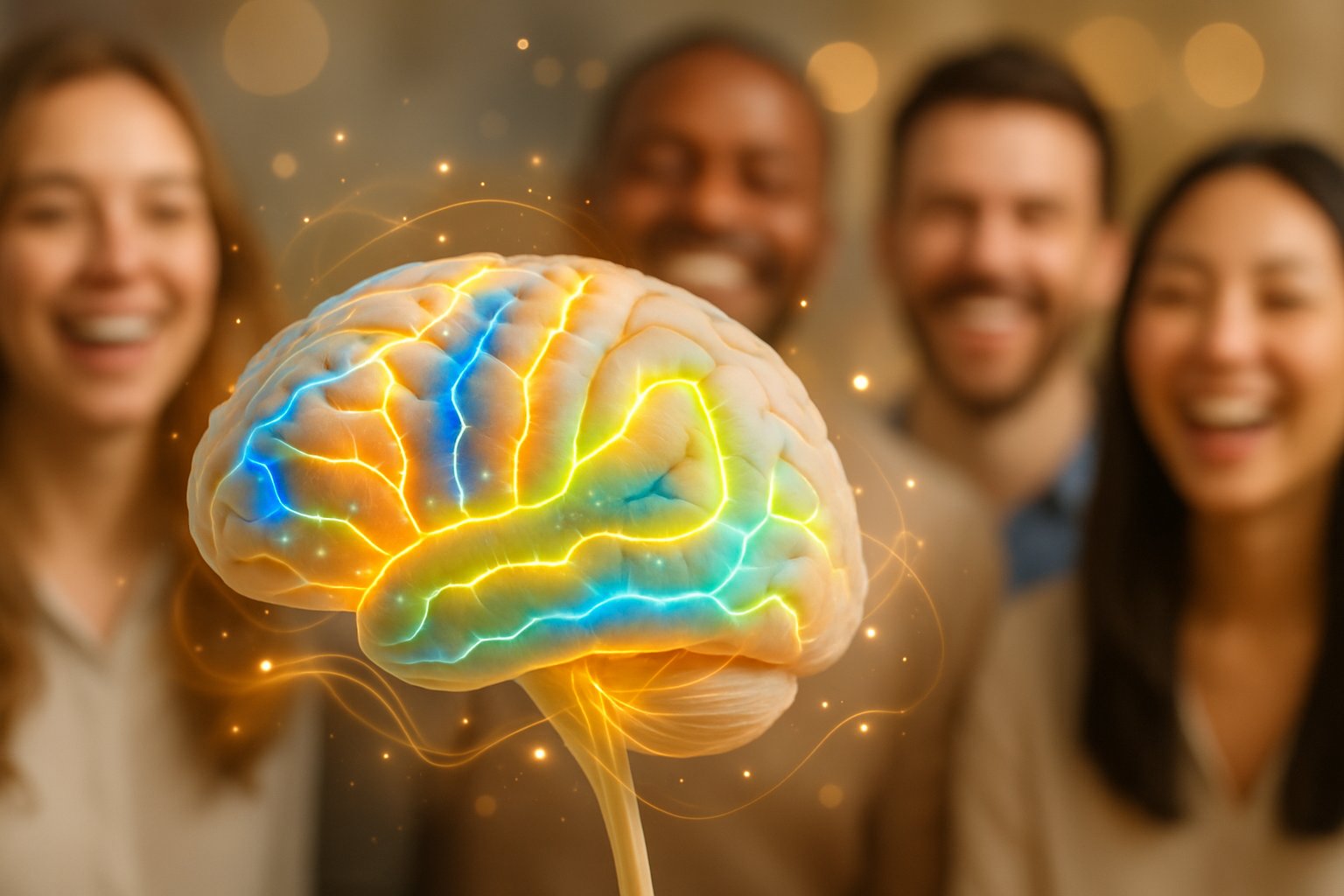
The brain produces happiness through specific chemicals and systems that work together. Understanding how dopamine, serotonin, oxytocin, and endorphins function helps explain why certain activities and foods affect mood.
What are the four primary hormones responsible for sensation of happiness?
Four main chemicals create feelings of happiness in the brain. The brain’s limbic system uses these neurotransmitters to regulate emotions and well-being.
Dopamine acts as the reward chemical. It creates feelings of pleasure when people achieve goals or experience something enjoyable.
Serotonin regulates mood and emotional balance. This neurotransmitter helps maintain feelings of calm and contentment.
Oxytocin promotes bonding and trust between people. It releases during physical touch, social connections, and acts of kindness.
Endorphins work as natural pain relievers. The body produces these chemicals during exercise, laughter, and stressful situations to create feelings of euphoria.
What role does dopamine play in regulating mood and pleasure?
Dopamine drives motivation and reward-seeking behavior. The neurotransmitter creates that rush of euphoria when people eat chocolate or receive compliments.
The chemical activates when people anticipate rewards. This explains why looking forward to events often feels as good as the actual experience.
Dopamine also controls movement and focus. Low levels can lead to difficulty concentrating and reduced motivation to complete tasks.
The brain releases dopamine in response to unexpected positive events. This system encourages people to repeat behaviors that led to good outcomes.
How does serotonin impact emotional well-being and satisfaction?
Serotonin regulates mood, sleep, and appetite patterns. This “feel-good” chemical helps people feel calm, focused, and content when levels remain balanced.
The neurotransmitter affects how people respond to stress. Higher serotonin levels help individuals cope better with difficult situations and maintain emotional stability.
Most serotonin production occurs in the digestive system. This connection explains why gut health directly impacts mood and mental well-being.
Low serotonin levels link to depression and anxiety disorders. Many antidepressant medications work by increasing available serotonin in the brain.
In what ways can diet influence the levels of hormones associated with happiness?
Certain foods contain building blocks for neurotransmitter production. Tryptophan-rich foods like turkey and bananas help the body create serotonin naturally.
Omega-3 fatty acids support brain function and mood regulation. Fish, flaxseeds, and walnuts provide these essential fats that reduce depression risk.
Dark chocolate triggers endorphin release in the brain. The compounds in cocoa activate pleasure centers and improve mood temporarily.
Complex carbohydrates help transport tryptophan across the blood-brain barrier. Whole grains and vegetables support steady serotonin production throughout the day.
Probiotics in fermented foods affect the gut-brain connection. Yogurt, kefir, and kimchi promote healthy bacteria that influence neurotransmitter production.
How does the balance of neurotransmitters affect overall mental health?
Neurotransmitter balance determines how people experience emotions and respond to daily challenges. Too much or too little of these chemicals can disrupt mood stability.
Imbalanced dopamine levels affect motivation and pleasure-seeking behavior. Excess dopamine links to mania while deficiency connects to depression and apathy.
Serotonin imbalances impact sleep, appetite, and emotional regulation. Disrupted levels can lead to mood swings, anxiety, and digestive problems.
Multiple neurotransmitters work together to maintain mental health. Problems rarely involve just one chemical but rather complex interactions between different systems.
What methods can be used to naturally increase the production of hormones that contribute to happiness?
Regular exercise boosts endorphin, serotonin, and dopamine production. Physical activity acts like a natural antidepressant by increasing multiple feel-good chemicals.
Social connections trigger oxytocin release naturally. Hugging, spending time with loved ones, and helping others activate bonding hormones.
Meditation and mindfulness practices increase serotonin levels. These techniques also reduce stress hormones that interfere with happiness chemicals.
Gratitude exercises stimulate dopamine pathways in the brain. Writing down three positive things daily strengthens neural connections associated with well-being.
Adequate sleep allows the brain to regulate neurotransmitter production. Seven to nine hours of quality rest supports healthy hormone balance.
Sunlight exposure helps maintain serotonin levels naturally. Spending time outdoors each day supports the body’s production of mood-regulating chemicals.